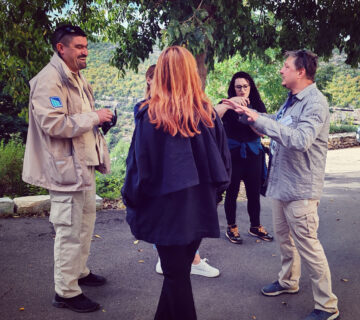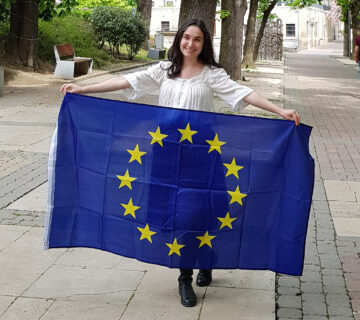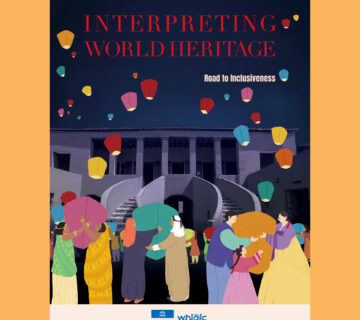Touring the Zapresic Novi Dvori estates, I ran into a character called Marica, showcasing our local heritage in a refreshingly intriguing fashion.
Earlier in the autumn, I visited the Jelacic days held at the renowned Novi Dvori estates in Zapresic, Croatia. While surveying this historical manifestation, the authentic maidservant, Marica, invited me to join a heritage interpretation workshop. At last, I thought, something fun, and an activity that coincidentally resembled a project I was working on. The perfect incentive at the perfect time.
Meeting Marica (played by Ivana Zrilić), more than ever I realised the importance of who and how a story is told – she made every story interesting and personal. That influenced me to explore the role of an interpretive guide, at least for a while. I quickly cooked lunch, handed over the kids to my husband and embraced the Sunday bliss of the enchanting Novi Dvori. Alone and free, curious of what I would learn and experience. Rain started pouring and it got cold so I put on my heavy coat, motivated to continue.
I was thrilled to encounter Ivana, ever enthusiastic and equipped with accessories. What a sight to see strangers showing an interest in the workshop! Driven by positive feedback, guests from Zagreb enjoyed festivities honoring the legendary Ban Josip Jelacic. It was a tremendous achievement for people from the capital to travel to a suburb for cultural events, as opposed to rushing downtown for entertainment. I always emphasised that even if it lacked in numbers, our hearts made up the difference! Zapresic has so much to discover, so much potential to develop.
Finally, the workshop began. The brief introduction and reference to bells reminded me of Hemingway’s For whom the bell tolls. Ivana started displaying countless personal items and asked us to share our associations. Suddenly, I remembered all the tickets, postcards, letters, dedications, messages and other memorabilia from travels, performances and exhibitions I have kept at home… I could also show them and help others evoke their own memories. This workshop truly intended to encourage personal experiences rather than generic stories and, thinking back to my project at work; when examining Proust’s masterpiece, Combray, a novel in which the narrator reminisces about his idyllic childhood while eating honey madeleines with tea, I always ask my students what smell, taste or sound takes them back in time.
For our next assignment I was paired up with an American studying Croatian heritage. We were supposed to find and draw an object near us. My choice was a counter in the forest where a young DJ played music. He picked a wooden detail from the Matija Skurjeni museum. My statement, “Those were the careless days“, is singled out as the central idea – my retrospection painted a time when I was free and on my own, going out and longing for what I have today. My partner, Jeremy’s, sentence was, “I like the details of Croatian architecture“. It is intriguing to see how others often consider us more valuable then we do ourselves. Everybody represents another’s object. There was no self promotion but a position of interpreting someone else’s chosen location and experience. An interpretation of an interpretation.
We listened, talked and laughed. Even though we do not know each other, we shared secrets from our lives. However, everyone added their own, personal signature while interpreting objects others chose. That is something unchangeable. Encouraged, I realise I have so much to tell in my own, unique way. I started writing a project, decided to enroll in a tourist guide course and make sure Ivana includes me in the next heritage interpretation class as soon as possible. See you there!
Branka Tolić is a Croatian language teacher working in Gornjogradska gimnazija, Zagreb, Croatia (www.ggg.hr). Her personal blog created during lockdown this year is: https://www.karantenablog.com/. You can get in touch with her at: branka.tol@gmail.com.
To cite this article:
Tolić, Branka (2020) ‘True stories and real experiences spice up presentation’. In Interpret Europe Newsletter 4-2020, 25.
Available online: https://www.interpret-europe.net/fileadmin/Documents/publications/Newsletters/IE_newsletter_2020_4_winter.pdf




